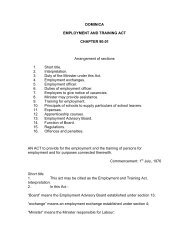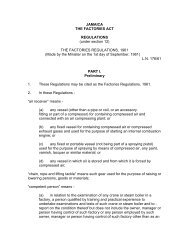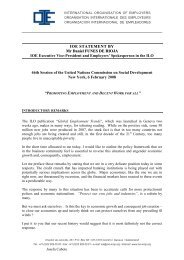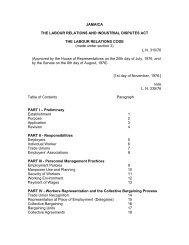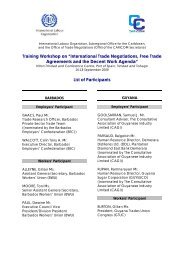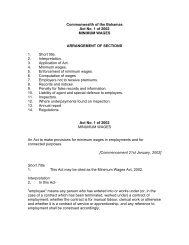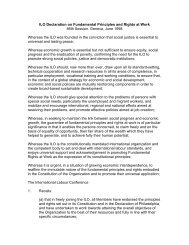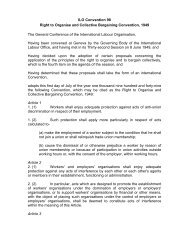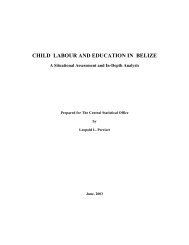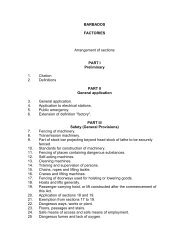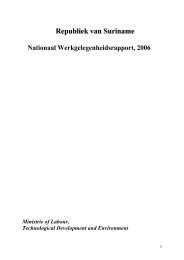ILO REPORT ON CHILD LABOUR IN BARBADOS - International ...
ILO REPORT ON CHILD LABOUR IN BARBADOS - International ...
ILO REPORT ON CHILD LABOUR IN BARBADOS - International ...
You also want an ePaper? Increase the reach of your titles
YUMPU automatically turns print PDFs into web optimized ePapers that Google loves.
4. Research Findings<br />
_____________________________________________________________________<br />
4.1 Characteristics of Locations Studied<br />
Nassau and Paradise Island<br />
Nassau is the commercial, business and financial capital of the Bahamas. It has a population<br />
of 210,832 (2001). The population density is 2,635 per square mile making Nassau, the most<br />
populated area of the Bahamas. Most government departments and commercial businesses,<br />
have their main offices in Nassau with links to other islands. The city is well served by<br />
physical amenities, telecommunications, air and sea transport. A state-of-the-art bridge<br />
facilitates vehicular and pedestrian access between Nassau and Paradise Island and the two<br />
islands are closely linked because of tourism. Paradise Island has several hotels and<br />
attractions, but the Atlantis Hotel dominates in physical size and its economic impact. It was<br />
described as a ‘Centre of Commerce’ rather than a hotel, because of the various commercial<br />
entities that operate within its precinct and the business linkages to the rest of the economy.<br />
The economy of Nassau centres not only on hotels, but a thriving cruise ship industry<br />
supported by piers, harbours and shopping facilities. The city of Nassau is divided into two<br />
main areas. On one side there is the main commercial and tourist section of the city with<br />
several five star hotels, linked to international chains. This section of the city is residential for<br />
very affluent citizens. In sharp contrast, ‘Over the Hill” is a gateway to poorer Bahamian<br />
communities. Among the poorer areas are communities like Bain Town and Grants Town,<br />
whose residents tend to have lower than average incomes, experience several social problems,<br />
have a lower standard of living and housing and experience higher than average levels of<br />
unemployment and poverty.<br />
Freeport/Grand Bahama<br />
Freeport is the second largest city in the Bahamas and the third largest island covering 530<br />
square miles. According to the 2000 Census, Freeport has a population of 46,994 and the<br />
population density is 89 per square mile.<br />
The economy is based on tourism and industries, as a result of foreign investment in the<br />
1950s. Developers were granted special privileges and duty free exemptions under the<br />
Hawksbill Creek Act of 1955. This enabled Freeport to develop as a tourism resort with an<br />
industrial complex hosting a wide range of industries. Today, several major hotel chains are<br />
among the many hotels in Grand Bahama. Lucayan is a large complex for cruise and stop<br />
over visitors. There is a container port, managed by the Port Authority, a cement company,<br />
and an oil refinery, each representing major foreign investments.<br />
At extreme ends of the island are Pelican Point in the East and the West End in the west. The<br />
population of Grand Bahama is culturally diverse and is comprised of many migrant groups<br />
including Bahamians, Turks and Caicos Islanders, Jamaicans and Haitians. Income levels<br />
also vary in keeping with the dominant occupations of these national groupings. Eight Mile<br />
Rock and surrounding communities is one of the very poor areas visited as part of this study.<br />
26




